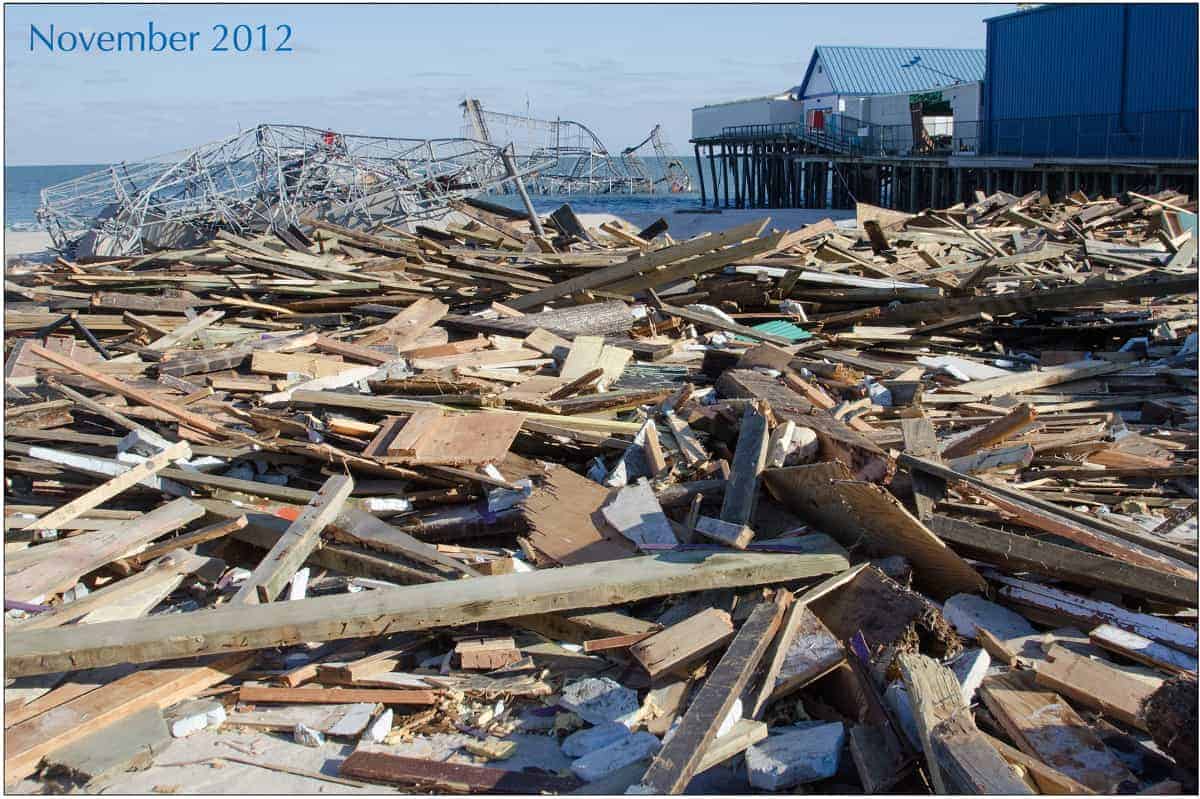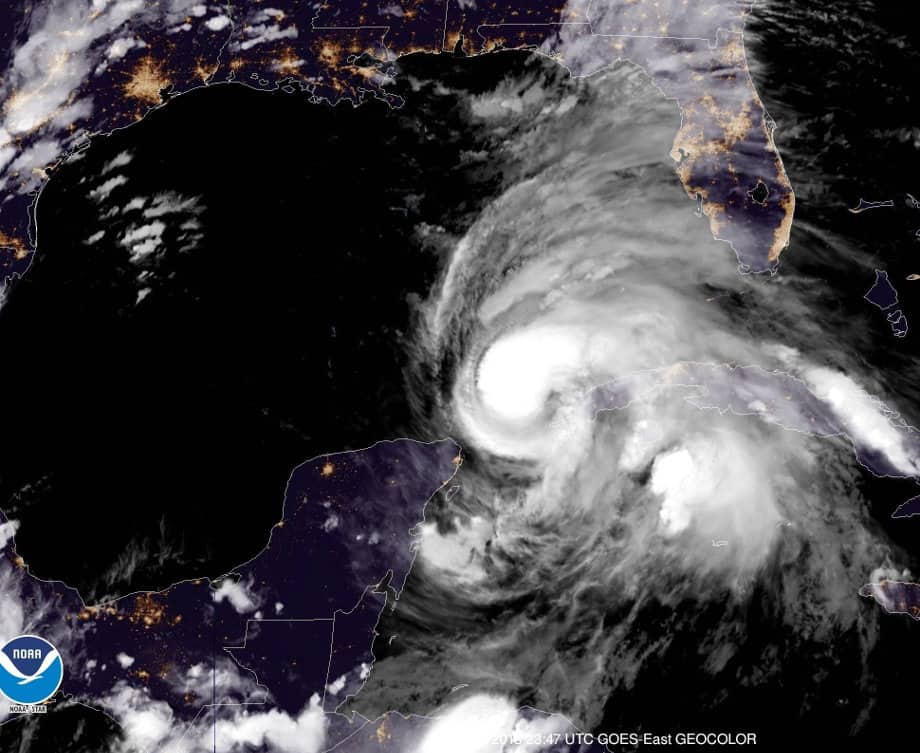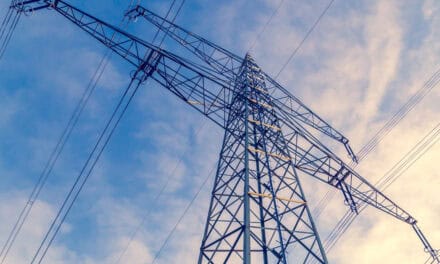The Fifth Anniversary of Superstorm Sandy Finds Some Residents Still Not In Their Homes
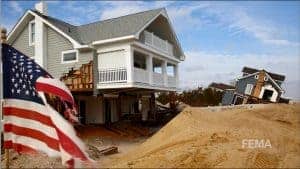
Long Branch New Jersey
Sunday, October 29, 2017. Five years ago, Hurricane Sandy wrought destruction along the coast of New York and New Jersey. And nearly half of the all the states in the USA. Called a “superstorm” by many, Sandy washed away roads and homes and destroyed the hopes and dreams and lives of many caught in its path. It was the deadliest and most destructive storm of the 2012 Atlantic hurricane season and the second most costly in United States history. At a minimum, Sandy took the lives of 223 people in eight different countries along the hurricane’s path including 157 fatalities in the United States either directly caused by or related to the storm. Damage topped 71 Billion dollars in the USA.
New Jersey 2012—In the Aftermath of Superstorm Sandy
Superstorm Sandy
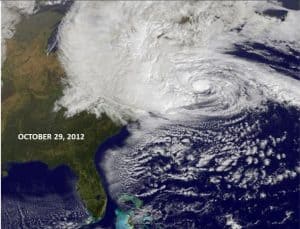
The breadth of Sandy as it merged with other weather systems was massive and affected 24 states including Michigan and Wisconsin.
It remains an example, especially to U.S. residents, that it doesn’t take a category five storm to wreak incredible destruction. After moving through the Bahamas as a Category 1 hurricane, it weakened briefly to a tropical storm, but then regained strength again as a category 1 hurricane. Just before making landfall near Brigantine, New Jersey, Sandy became a post-tropical cyclone with hurricane force winds.
The cyclone was massive as the eye came ashore in New Jersey and its breadth stretched across Appalachia all the way to Michigan and Wisconsin. The storm surge in New York City flooded streets, tunnels, and subways and caused power outages across the city and surrounding it. In total it affected at least 24 states.
During the night of the 29th of October, Sandy roared through the town like a runaway freight train, stripping roofs, blowing out windows, breaking off branches and re-locating outdoor furniture and decorations. The power of the storm was awe inspiring. ~Bob McGregor, West Milford, NJ.
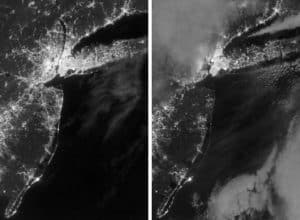
Comparison Photo by NASA. Left is New York City, New Jersey, and Long Island on August 31, 2012. Right is Nov 1 with more than 7.4 Million Reported Power Outages.
In Michigan, Waves on Lake Huron reached up to 23 feet high and 120,000 people lost power as the storm dumped heavy snow on the Lower Peninsula, Ohio, Kentucky, West Virginia. Buildings in West Virginia, where snow accumulations reached up to three feet, collapsed under the weight.
When I went outside to see what had bounced off the house I was nearly blown flat. Scared me speechless, to tell the truth. ~Bob McGregor.
Restoration

New York’s Jones Beach State Park Boardwalk and Beach in Ruins after Hurricane Sandy.
With the loss of power to more than 7.4 million electric utility customers—more than 12 million people all together—restoration of electrical service was one of the top priorities. In New Jersey, Governor Christie estimated more than 2.4 million customers had lost power. Restoration efforts were further hampered, and outages worsened by the Nor’easter of November 2012 which caused an additional 43,000 outages in New Jersey and New York.
It’s an eerie feeling when your town is still dark. Even after the power came back on it was tenuous in sections of the city. ~ Mayor Adam Schneider

The boardwalk and beach after extensive restoration efforts
Safe Portable Generator Placement
Winds reached up to 65 MPH in places. Snowfall totals reached 13 inches in Connecticut and almost five inches in Central Park—a new daily record and also the record for the earliest snowfall of over four inches.The snow made efforts more difficult and delayed work.
By November 9, 265,000 New Jersey customers were still without electrical power and a total of 715,000 across the affected states. A month later, electric utility service was still not complete with about 10,000 customers still without power.
Other damage would take much longer to repair. Houses take months to build and many were destroyed. Those that experienced extreme flooding were encouraged to raise their homes above potential waves and storm surge.
And it wasn’t just the building. Sandy left behind six million cubic yards of debris—a volume approximately equal to four Empire State Buildings filled top to bottom.
Shop Standby Generators for Emergency Power During Storms
5 Years Later
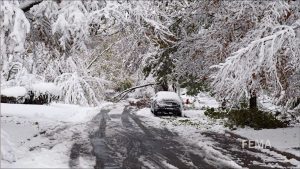
Snow brought by the Nor’easter hampered the efforts of emergency responders, utility workers, and residents to clean up and assess damages.
According to founder of Hometown Heroes Mike Schwartz, a nonprofit charity organization, people still struggle. Even after five years of rebuilding, there are still people who are not back in their homes. Billions were spent on infrastructure, coastal restoration, housing, and other expenses. In New Jersey, 80,000 homes and rental residences were damaged or destroyed according to FEMA. Out of some 8800 homeowners eligible for a rebuilding program, just 85 percent or 7500 have completed construction and returned home.
In New York, according to the governor’s office, 99 percent of homeowners who applied for disaster assistance were served. 87 percent completed construction of their new homes or had their home’s purchased by the state because they were in areas deemed too vulnerable to rebuild.
New seawalls were built. Roads washed away by storm are in use. Homes were rebuilt or their families relocated. Some businesses survived, others did not.
Portable Generators For Home Backup Power
Shades of Sandy
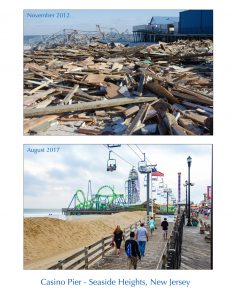
Iconic image of the destruction of Hurricane Sandy. The Casino Pier’s Jet Star Roller Coaster Sits in the Atlantic Ocean. Five years later the pier is rebuilt and has new attractions. FEMA/K.C. WIlsey
On the anniversary of Sandy, in what was surely a blow to those who still suffer anxiety from the original storm on its anniversary, the remnants of Tropical Storm Philippe contributed to another storm that knocked over trees, caused widespread power outages, flooding, tropical-storm-force winds, and major travel disruptions struck the northeastern US.
Down trees and power lines, gusts that reached hurricane force, and torrential rains that caused coastal flooding served as a stark reminder that the next storm could strike within days of forming. It’s why weather experts and disaster experts warn people to plan and prepare for the worst. From the Caribbean to Texas to Florida and all along the East Coast, the threat of a hurricane or tropical storm is just days away.
Tropical cyclones are most frequent from June 1 to November 30—The Atlantic Hurricane Season—but can form at any time of year and make landfall.
Are you ready?
Make a Plan for the Next Hurricane Disaster to Head Your Way

